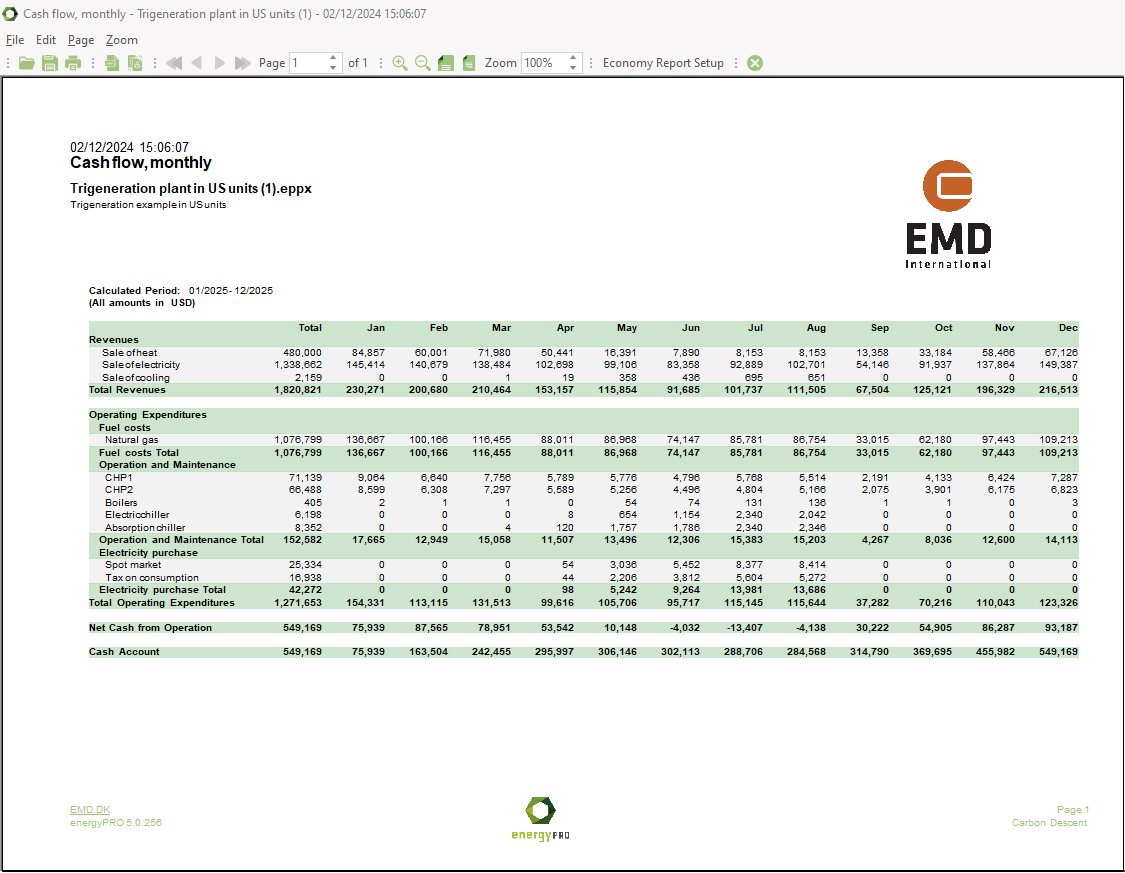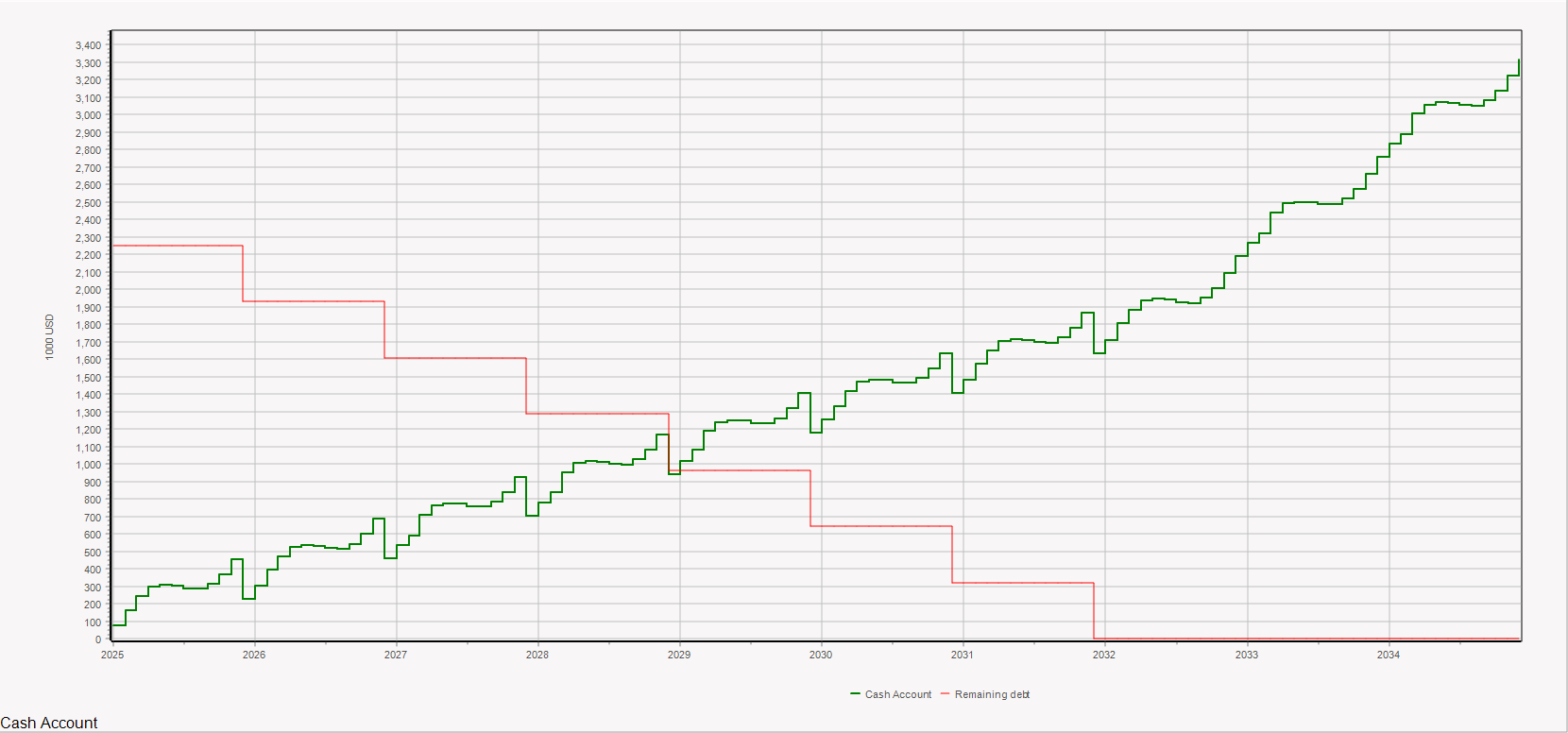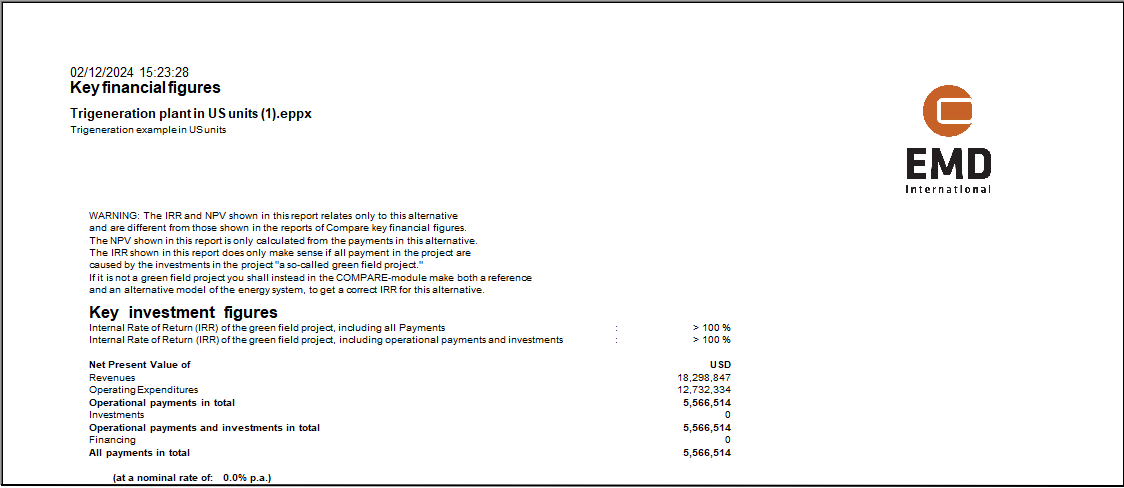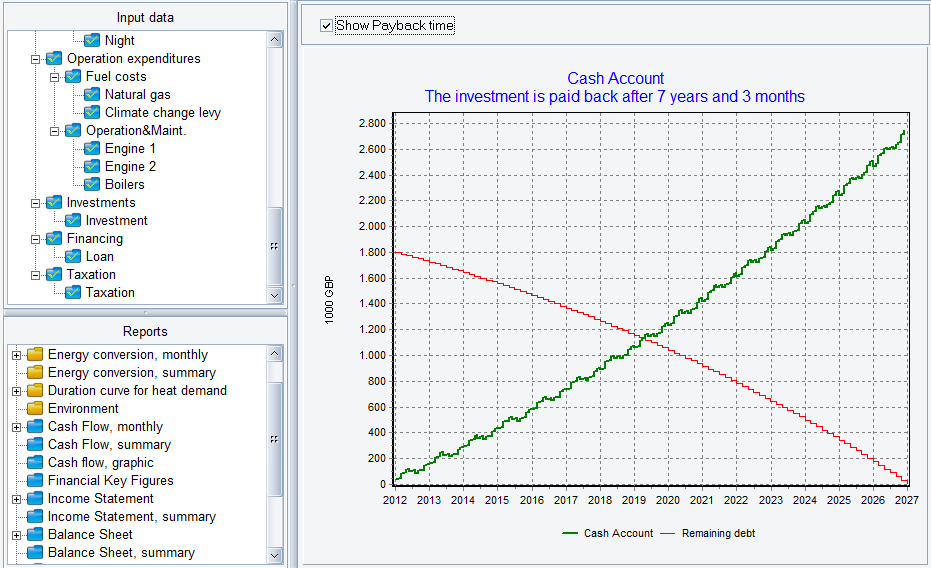Method of economy calculation in energyPRO
In this chapter is described, how energyPRO calculates the economy in a project.
It is important to remember, that economy in energyPRO is basically monthly based, and that it is possible for you to model exactly the size of each monthly payment in all months of the Planning period, e.g. 30 years (equal to 360 month).

energyPRO calculates nominal payments
Please notice that the monthly payments defined in energyPRO is your best guess about the payments taking place in all months in the Planning period. It is not payments converted to the value of the payment in a specific year (it is not fixed prices). The following figure is found in the report “Cash flow, graphic”

Net present value calculation
Nominal discount rate is given on a yearly basis, e.g. 7,0 % per year. But in the Net present value calculation every monthly payment are brought back to Present (start of the Planning period) on a monthly basis. Therefore the yearly discount factor (e.g. 1,07) is converted to a monthly discount factor (e.g. the yearly 1,07 is converted to the monthly 1,005654), being used for bringing back payments to Present.
You are able to see the Net present value of the payments only belonging to the Financing, as a sub balance.

Net present value and Annual Key Figures is to be found in the report key financial figures.
Internal rate of return
What Does Internal Rate Of Return - IRR Mean?
The IRR is the discount rate that makes the net present value of all cash flows from a particular project equal to zero. Generally speaking, the higher a project's internal rate of return, the more desirable it is to undertake the project. As such, IRR can be used to rank considered projects. Assuming all other factors are equal among the considered projects, the project with the highest IRR would probably be considered the best.
How is the IRR found
The IRR is found by iterations using Newton’s method.
The series of payments must contain at least one negative value (investment) and one positive value (income) to calculate the IRR.
To promote that the IRR is found and is determined unambiguous the series of payments must start with an investment followed by payments all positive.
If the created time series contain more negative values than the initial investment, there might be more solutions causing the IRR to be ambiguous. Another problem might be that the iteration routine finding the IRR will not converge. In that case a message in the “Financial key figures”-report will tell that the IRR is “Not found”.
There will be cases, where the time series start with a positive value (income) before the investments will cause the iteration routine finding the IRR will not to converge.
The monthly-based IRR might show the most correct IRR while the annual based IRR in some cases will be more robust. In the annual case, some months with negative values might be eliminated when summed up annually.
NOTICE that energyPRO calculates the actual cash flows in the planning periods, and not cash flows expressed in the price level of a certain year. That is to say, that energyPRO calculates the Nominal IRR, whereas you in a spread sheet often calculate Real IRR, expressed in the first year price level.
The difference between the Nominal and the Real IRR is in practice equal to the average inflation in the planning period.
Payback time
energyPRO only offer you one Pay Back Time.
This Pay Back Time is defined as the month, in which you are able to pay back your loans (the month in which the money in the cash account equals remaining debts in the loans).

The warning about Internal rate of return is also relevant, if you are going to use Pay Back Time.
Please be very careful not to include payments, that would exist, even without the investments.
